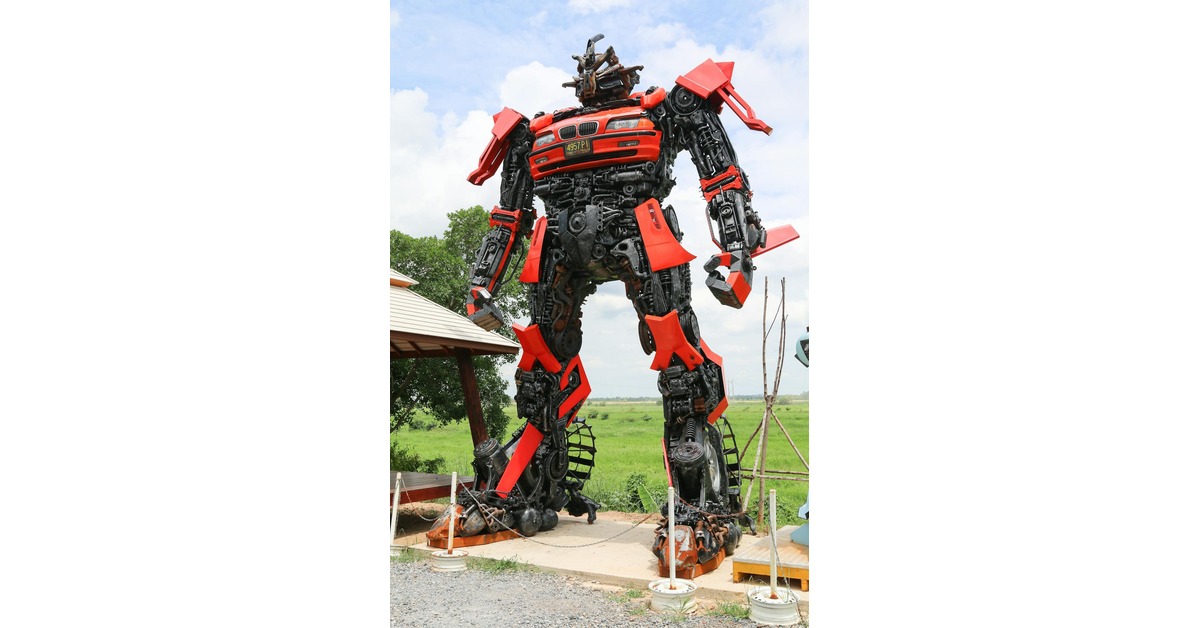Introduction
Giant Decomposing Robot might sound similar to technological information fiction; however, this concept explores the mixture of technology and nature. Whether it’s a futuristic concept in robotics or a green innovation, the trouble opens up thrilling possibilities for recycling, sustainability, and storytelling. This article dives deep into what giant decomposing robots may also want to constitute, their capacity packages, and their implications for the future.
What Are Giant Decomposing Robot?
Giant Decomposing Robot are imagined massive-scale systems designed with biodegradable or difficulty-recyclable components. Unlike conventional machines, those robots are constructed to interrupt after serving their motive, leaving minimal environmental effects.
Key Features:
Biodegradable Materials: Made of substances that certainly decompose, incorporating bioplastics or organic composites.
Self-Decomposition Technology: Equipped with structures that cause decomposition as soon as their mission is complete.
Eco-Conscious Design: Designed to combine natural environments with minimal disruption.
Applications of Giant Decomposing Robot
From science fiction to practical use, the capability programs of those robots are extraordinary and varied.
Environmental Cleanup
Robots can be programmed to smooth polluted regions and decompose appropriately, leaving no waste in the lower back.
Example: Robots putting off ocean plastics that crumble into biodegradable particles.
Disaster Relief
Temporary robots ought to be helpful resources in disaster zones and decompose once their project is completed, avoiding logistical demanding situations in the cleanup.
Uses: Delivering assets, building transient shelters.
Space Exploration
Biodegradable robots could find extraterrestrial environments and degrade them without leaving dangerous particles.
Agriculture
Robots that beautify soil excellently, plant seeds, or display screen flora could decompose into natural fertilizers.
Entertainment and Art
Giant decomposing robots might also want to function as symbolic installations that carry the impermanence of the era.
Advantages of Giant Decomposing Robot
The benefits of those robots align with growing environmental and technological priorities.
Sustainability
Reduces long-term waste.
Encourages the use of inexperienced materials.
Cost-Effectiveness
Eliminates the want for pricey waste disposal strategies.
Adaptability
Tailored to brief-time period tasks without lengthy-term resource commitments.
Environmental Harmony
Minimal ecological disruption via decomposable designs.
Challenges in Developing Giant Decomposing Robots
While the idea is promising, numerous demanding situations exist in making Giant Decomposing Robot a fact.
Material Development
Developing long-lasting, however, biodegradable substances requires extraordinary innovation.
Cost of Production
Eco-satisfactory substances can be more tremendously high-priced than traditional ones.
Complex Programming
Ensuring robots can complete duties and self-decompose without mistakes is technically stressful.
Regulatory Hurdles
Governments and organizations may need to develop recommendations for deploying and decomposing robots in sensitive environments.
The Role of Science Fiction in Shaping the Concept
The idea of massive Giant Decomposing Robot often competes in technological knowledge fiction as a metaphor for the transience of human achievements. These memories discover sustainability, ecological balance, and human and machine relationships.
Notable Examples:
Movies: Transformers series wherein robots are depicted as powerful entities but lack ecological awareness.
Books: Do Androids Dream of Electric Sheep? with the aid of Philip K. Dick, explores problems of obsolescence and ethical robotics.
TV Shows: Westworld, where quick use of advanced robotics questions sustainability.
Future Implications of Giant Decomposing Robots
As the arena faces weather trade and technological waste demanding situations, the improvement of such robots must bring in the latest technology of sustainable innovation.
Environmental Impact:
- Reduces landfill waste.
- Promotes a spherical economic system for robotics.
Technological Advancement:
- Pushes barriers in cloth science.
- Encourages moral and sustainable engineering practices.
FAQs About Giant Decomposing Robot
Are decomposing robots actual?
While no fully purposeful giant decomposing robots exist, researchers are exploring biodegradable materials and robotics.
What materials could make robots decompose?
Bioplastics, natural composites, and other eco-friendly materials like mushroom-based additives are being investigated.
How long does it take for a robot to decompose?
Decomposition time relies upon the substances used. Biodegradable plastics can take weeks to months, while natural additives decompose faster.
What industries can take advantage of those robots?
Industries like environmental management, agriculture, area exploration, and disaster comfort can benefit substantially.
Are there risks associated with decomposing robots?
Potential dangers include unintended decomposition at some point of use and disturbing situations with massive-scale manufacturing.
Conclusion
The idea of Giant Decomposing Robot bridges the distance between generation and sustainability. Though often a futuristic concept, those robots might also need to resolve some of the most urgent environmental worrying situations. By specializing in eco-friendly designs and modern materials, scientists and engineers can convey this concept to existence, reaping the rewards for industries and ecosystems.
As technology evolves, the dream of seeing a massive robot that serves a meaningful motive and has minimal impact on the earth could probably become a reality. This can also mark a giant step toward achieving harmonious stability between innovation and environmental stewardship.
